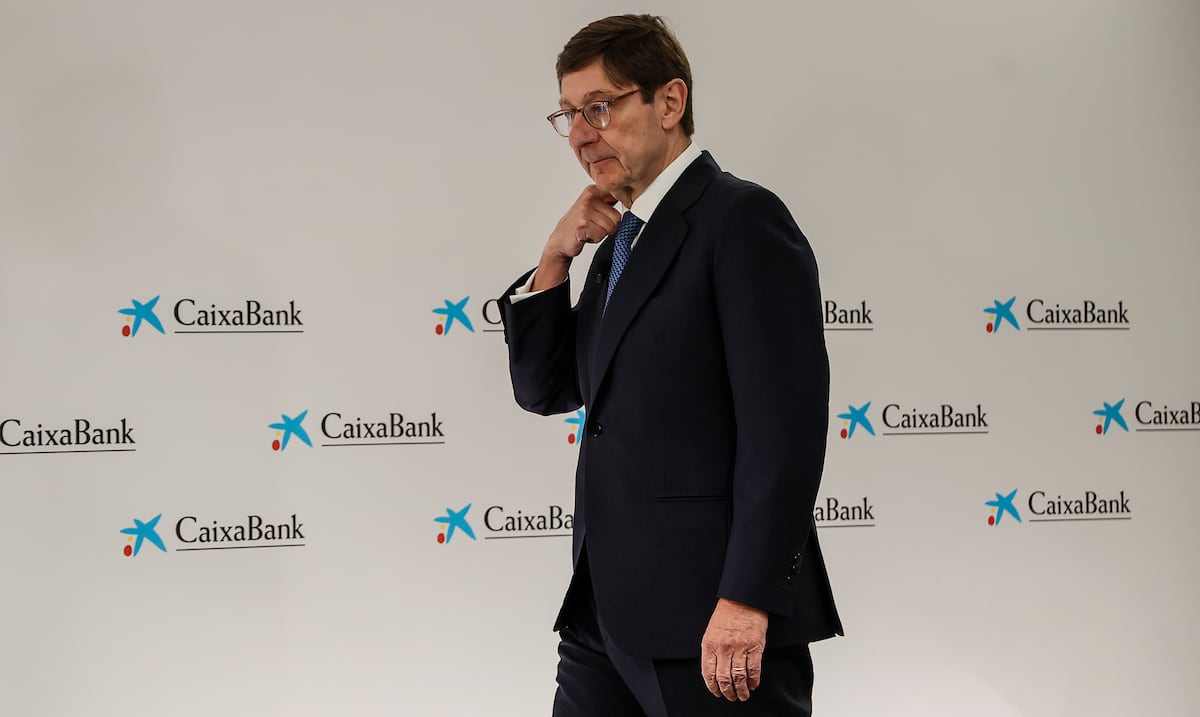Goirigolzarri will not be able to work in banking for a year after leaving his post as president of CaixaBank | Companies

José Ignacio Goirigolzarri will have to stay away from the financial world for at least a year. Until now, the executive president of CaixaBank has a non-compete obligation in his contract, which is extended for 12 months after his departure from the bank, which will occur on January 1, 2025, until January 1, 2026. This is the second departure of the head of a large Spanish company after leaving BBVA in 2009.
“The contract contains a post-contractual non-competition agreement for a period of one year from the date of its termination, which applies to any direct or indirect activities in the financial sector,” CaixaBank’s board of directors said in its 2023 remuneration report. In this document, the company states that the non-compete compensation will be “one year of a fixed portion of its compensation.” It is also clarified that compensation is paid in 12 monthly installments, which begin to be paid the month following your departure. This would mean pocket 1.5 million.
The contract provides for additional compensation, regardless of non-compete, of an additional 12 months for early termination of the contract. However, in the case of the Basque banker, he would not be able to pocket this additional money, given that this contract left this compensation void if the departure was due to voluntary departure.
These conditions contrast with Goirigolzarri’s previous departure from BBVA in 2009. He then decided to retire at the age of 55 while serving as CEO of BBVA. When he left, he agreed to a pension of around three million euros per year. The banker then decided to receive compensation in a lump sum and pocketed 68.7 million euros. The little over 1.5 million for non-compete that he will collect now is a drop of water compared to what he received then. The pension drew criticism, including from then-Vice President for Economic Affairs Elena Salgado.
Goirigolzarri arrived at Banco Bilbao in the 70s. He then piloted a merger with Banco Vizcaya to create BBV. And when he teamed up with Argentaria, Gonzalez chose him as number two. He was general manager of the business for eight years, after which he was responsible for retail banking or general manager, among other positions. He was replaced as CEO by Angel Cano, and then by Torres, who managed to become president of the organization.
His farewell came after the decision of the organization’s then president, Francisco Gonzalez, to delay his retirement for three years. In the end, Gonzalez did not leave until 2018, at the height of the Villarejo affair, when he was replaced by current President Carlos Torres.
Goirigolzarri then also spent some time in dry dock. But in 2012, after the public rescue of Bankia, the government was looking for a banker with reputation and experience to lead the organization and replace Rodrigo Rato. He turned his attention to Goirigolzarri and entrusted him with this task. His time at the helm was perhaps the greatest milestone in his professional career. He took over the management of a failed and rescued bank and managed to make it profitable.
His next adventure was to pilot the merger of Bankia with CaixaBank, creating the largest bank in the Spanish market. Since March 2021, when the deal became effective following its September 2020 offering, the combined company has more than doubled its stock market value. The stock price is at an all-time high and the company has a market capitalization of $40,000 million.
Saving Bankia
The government’s delay in releasing the bank’s capital is a major shortcoming of its management. FROB has an 18% stake and has no clear divestment plan, although its post-merger weighting has dropped significantly from what it had in Bankia, exceeding 50%. The deadline for this is December 2025, although the government is expected to extend it again as it has done in the past.
At the moment, two partial sales of its participation have been carried out. In January 2014, he received 1.304 million for the placement of 7.5%, and in December 2017 he earned another 818 million when selling another 7%. In addition, the Spanish state has earned a total of €2.1 billion in dividends since the bailout, including an additional payment collected in April that still applies to 2023 results at a rate of 39 cents per share. The bank plans to pay two dividends for this year’s results, in November and April, to reward shareholders with 50% to 60% of net profits, although it did not disclose the amount. The total amount of aid returned exceeds $4 billion.
